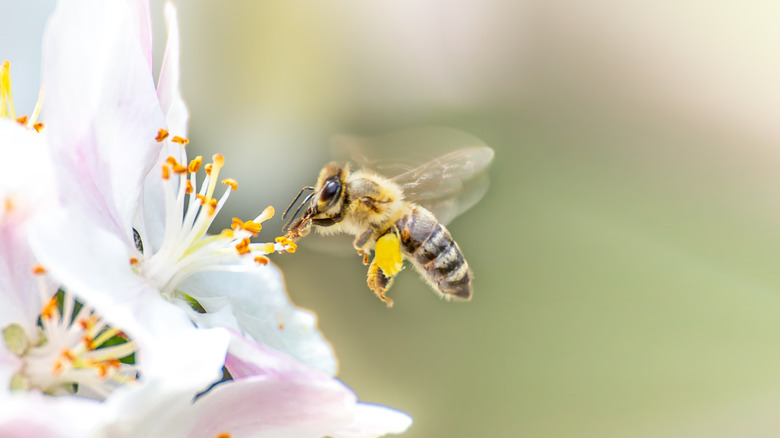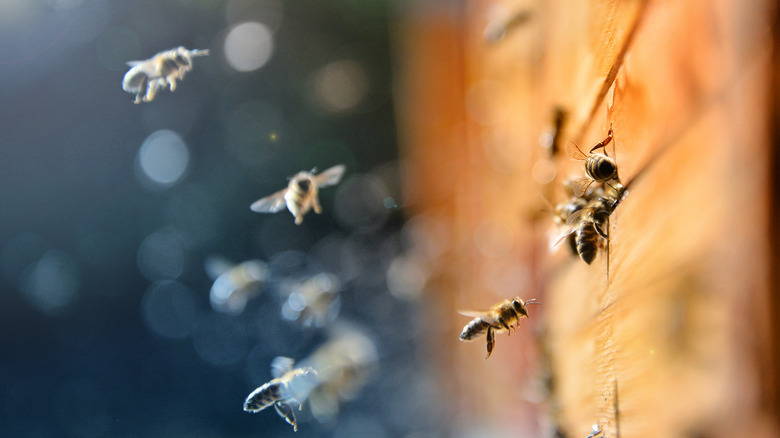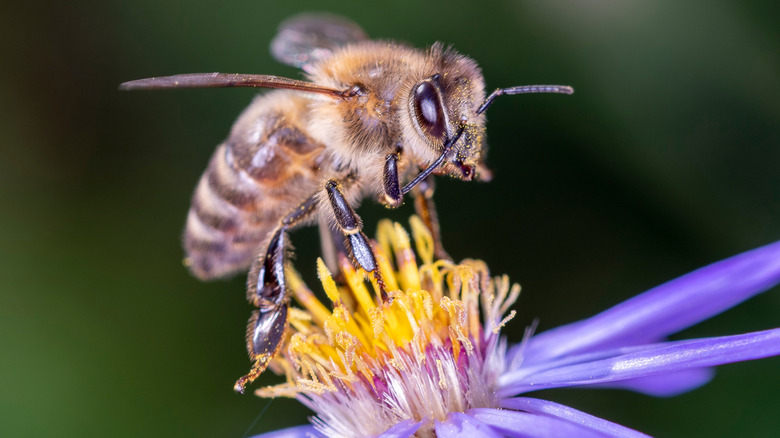The Surprising Way Bees Are Being Used In The Fight Against COVID-19
As vaccine rates go up, the world is starting to open its doors again. But that doesn't mean we're past COVID-19 just yet. It's a disease we will likely be dealing with for years to come, though not on the scale we've seen so far. This fact was likely on the mind of researchers in the Netherlands when they set to work on a unique diagnostic tool. One that gave fast, accurate results and could be used almost anywhere. One that relied on nature's busiest little bugs, the bee.
Normally when bees and health intersect, it's all about the honey. But researchers at Wageningen University and Research wanted to take things in a different direction. They wanted to see if they could use bees to detect cases of COVID-19.
It's not as far-fetched as it seems. A 2014 paper in Scientific Reports detailed the ways fruit flies moved their antenna when exposed to subjects with different kinds of cancer. The antenna movement was unique for the different forms of cancer, making fruit flies a possible cancer diagnostic tool.
As the report explained, insects can smell at a range that exceeded the abilities of gas sensors at the time. Now, seven years later, Dutch researchers have taken it a step further and actually trained bees to detect COVID-19.
How it works
Wageningen University and Research partnered with InsectSense, a company dedicated to using insect behaviors and traits to improve human lives, to train 150 bees as COVID-19-detectors. They detailed their process in a recent university press release and the process was surprisingly simple.
Researchers created a kind of cradle to hold the bees while they were exposed to minks infected with COVID-19. After each exposure, the bees were given a treat of sugar water. The bees were then exposed to healthy minks and received no sugar water. Within days, according to the press release, the bees would stick out their tongues when exposed to COVID-19, whether or not they received a treat.
This technique is known as classical conditioning or the Pavlov technique, named after Ivan Pavlov who famously trained his dogs to salivate on command using different stimuli before they were given food, as outlined in his 1927 paper. He pioneered the technique used by the Danish researchers, though his dogs took more than a few days to train.
Once properly trained, the researchers said, the bees could detect COVID-19 within seconds of exposure to a sample. The bees were able to give incredibly accurate results with "very low numbers of false positives and false negatives." Best of all, they were able to get the same responses from the bees when they were exposed to COVID-19 from human samples.
The next step
Bees might not seem like the most intuitive diagnostic tool, but they may be the tool best suited for many parts of the world. Other forms of COVID-19 testing can be costly, and results take longer than getting a response from the bees. Longer times between testing and results can lead to more exposure, perpetuating the problem.
According to the university's press release, InsectSense is taking a two-fold approach to scaling up the experiment into a fully usable tool. The first approach is to integrate insect DNA into a biochip, which can then be used for disease detection without the direct help of live bees.
Their second — and more immediate — approach is the creation of machines that can train and then house COVID-19-detecting bees. They intend to make the machine affordable so that it can be a viable tool in developing and recovering nations, much like the color-changing sutures developed by 17-year-old Dasia Taylor earlier this year.
Although these bees are trained solely for COVID-19, there is a chance that companies like InsectSense are on to a broader diagnostic breakthrough. A 2011 paper published in the Journal of Biochemistry stated that the human body produces hundreds of volatile organic compounds. When we become sick, these VOCs change. And if InsectSense is right, we may be looking at a future where insect-based technology can identify those changes to save lives. And that may all start with bees, sugar water, and COVID-19.



